The U.S. Fire Administration estimates that fires in commercial buildings cost owners over $2.4 billion per year. Wowza! This considered, monitored fire alarm systems are essential in the prevention of fires in commercial buildings.
Moreover, fire alarm systems can help to:
- Reduce damage to property
- Protect valuable assets
- And, save lives
But today, we have to ask: Is a regular fire alarm system enough?
OK, OK… Before you roll your eyes, hear us out. Fire alarm systems are an excellent and crucial first step in protecting your property. However, as a property owner, you may be able to do more!
A monitored fire alarm system can help to further prevent or reduce costly damage to your property while also better protecting its residents.
Read on to learn what a monitored fire alarm system is and how it can better protect your property.
What is a Monitored Fire Alarm System?
A monitored fire alarm system is an alarm system that has been programmed to transmit signals to a central station or fire control center. In simple terms, when the alarm goes off, the system will immediately alert an operator who will dispatch the appropriate fire protection team to your building.
A monitored fire alarm system ensures that the fire department is alerted to the fire as quickly as possible, without someone having to make the call. The seconds or minutes that a monitored fire alarm system might save you could make the difference between life and death (as dramatic as it sounds, it’s true!)
Monitored fire alarm systems are most commonly used in commercial facilities—and for good reason.
What is the Difference Between a Fire Alarm System and Fire Alarm Monitoring?
A fire alarm system sets off an alarm—usually a series of local, audible devices—to alert people in the building that a fire has been detected and to evacuate immediately. A fire alarm system does not notify the fire department of the detected fire. The fire department will not be dispatched unless someone calls 911.
On the other hand, a monitored fire alarm system will transmit a signal to a central station or fire control center where an operator will dispatch the appropriate fire department to your building—without anyone in the building calling 911.
How Does a Monitored Fire Alarm System Work?
A monitored fire alarm system has an installed control panel that will detect a fire and immediately transmit a signal to a monitoring station. The operator at the station will notify the fire department when they receive the signal.
Signals can be transmitted via:
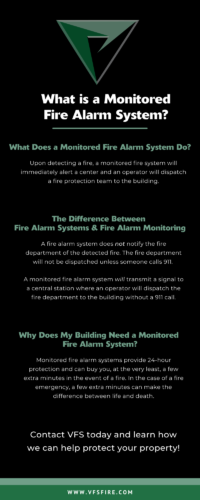
- Cell phones
- Phone lines
- Radios
- The internet
Why Does My Building Need a Monitored Fire Alarm System?
The answer to this is simple: Monitored fire alarms buy you, at the very least, a few extra minutes. In the case of a fire, a few extra minutes can be the difference in both saving buildings and saving lives.
In as little as thirty seconds, a fire can double in size, according to the U.S. Fire Administration. Additionally, a fire will spread even quicker if its surroundings are flammable, such as products that may be found in a warehouse or particular furniture.
If your building is equipped with a fire alarm system that isn’t monitored, the fire department will only be dispatched when someone manages to call 911 after sounding alarms, a fire suppression system or sprinklers, and a quick evacuation of all residents.
Considering these stressful protocols, how quickly do you trust your residents to call 911?
When Will the Monitored Fire Alarm System Protect My Building?
Monitored fire alarm systems provide 24-hour protection, seven days a week.
For instance, even if a fire occurs at nighttime or while your building is unoccupied, a monitored alarm system will ensure there is no delay in notifying the fire department.
How Do I Know If My Fire Alarm is Monitored?
A common error amongst commercial building owners is incorrectly assuming their fire alarm systems are monitored. Consequently, when a fire occurs, the call to 911 is severely delayed. This error leads to the destruction of the buildings that might have been saved if the proper precautions had taken place.
At VFS Fire & Security Services, we urge you not to wait until a catastrophic loss to have your system inspected.
The default option for many fire alarm systems is the installation of a single-station fire alarm, which doesn’t include the feature of sending a signal to the fire department.
If you’re not sure if your fire alarm system is monitored, you can have a fire and security service quickly inspect your system to let you know. At VFS, our system upgrades team can review your existing plans and make scalable proposals to meet your building, code, safety needs, and budget.
Not sure if your building is due for an inspection? Read our complete guide to fire and safety inspections for your facilities.
The Bottom Line
Fires happen often—every 63 seconds, in fact. This considered, commercial property owners should be adequately prepared to avoid the costly damages to their valuable assets and protect their residents.
Monitored fire alarm systems are a strong method of improving the protection of your property and its residents by ensuring the fire department is dispatched as quickly and efficiently as possible.
Don’t wait until it’s too late. Start a conversation with us today and let’s figure out how to best protect your building.


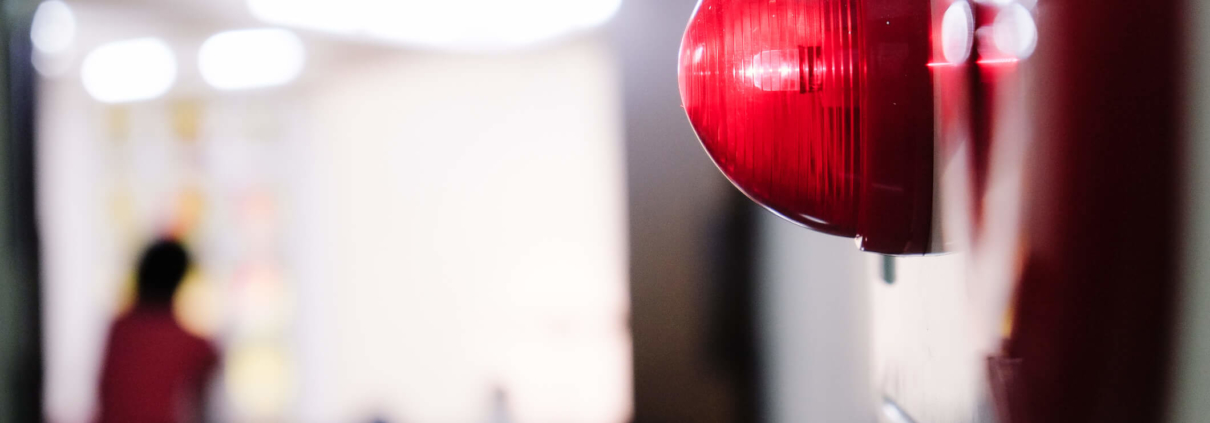
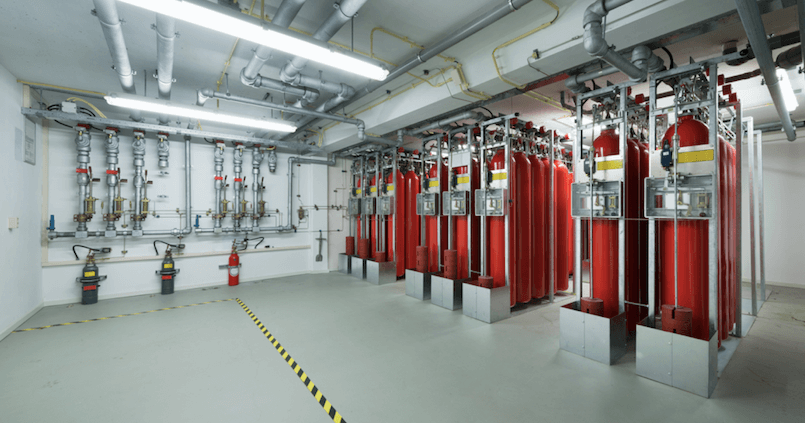
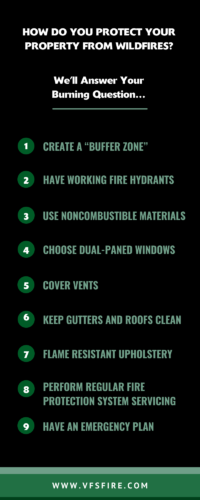
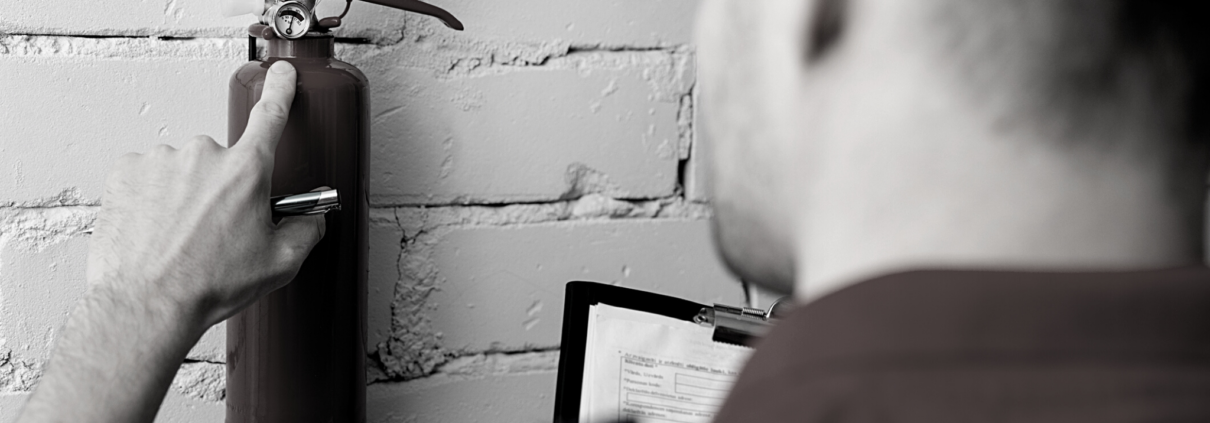
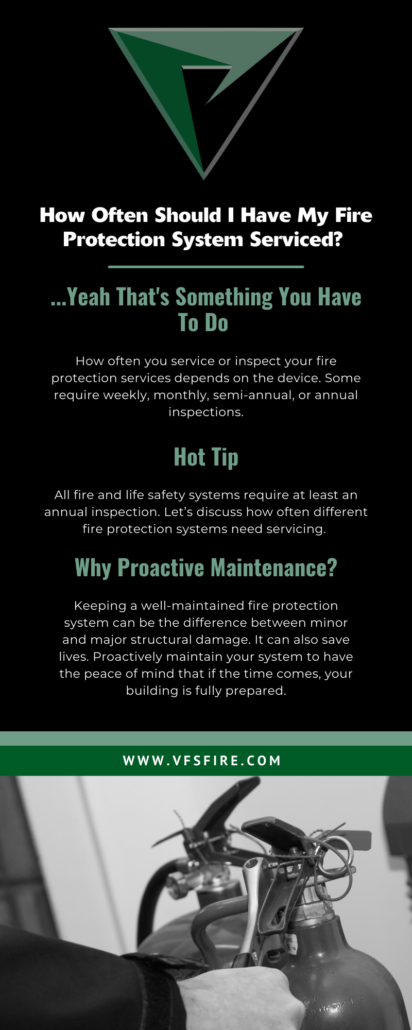 fire protection systems are no different.
fire protection systems are no different.